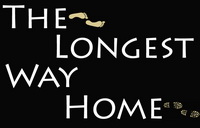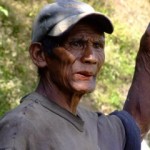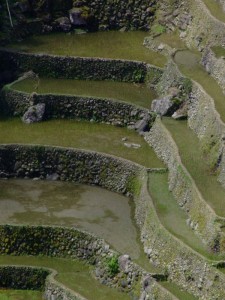
Banaue is a small town that’s featured in every guide book due to it’s UNESCO world heritage approved – Philippine Rice Terraces. As much as these sites are interesting, the tourist influx lowers their appeal to me.
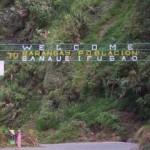
“How much?”
“1,500 pesos, per room.”
After China, and Nepal I was having problems adjusting to high room prices in the Philippines. Even when sharing with Lu, I was still paying more. What’s worse I was paying more for less. I walked out as Lu tried bargaining the lady down. Another tout came up.
“How much?”
He looked at the list of room prices behind me. “1,000”
“No thanks.”
I then spotted an old lady across the road. 5 minutes later and we had a double room for 400. It’s wasn’t great. But with private bathroom and plenty of cost saving tips from the old lady, I was happy.
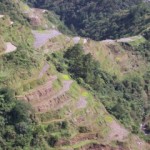
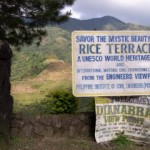
With the help of the old lady and another 400 pesos we arranged for a return trip Tricycle to take us to the look out point that would give us this world heritage site view. And so it did.
Our driver wanted to pull onto a concrete platform that had a group of Ifuago look-a-likes dressed up in native gear. Pose for a photo, hand over a wad of cash no thanks. Instead we moved up a bit further. Lu was as happy as I’d ever seen her. A little dream come true for her. To see her own countries rice terraces, at least the famous ones.
“Let’s go down to them,” I suggested.
Lu’s eyes lit up, and we were off scrambling down someone’s back garden after sending the tricycle driver away. We’d hit pay dirt. The rice terraces were a lot better close up.
The terraces were made from stone and clay walls. They prevented the mountains from erosion during the rainy season, and the small flat areas in between the terraces provided space for rice paddie’s .
We walked along the well maintained terraces and soon came across a local real Ifuago man, chewing away on some orange grain. I so wanted to take a photo. Lu was behind me and I didn’t want to insult the old man by thrusting a camera into his face. I politely nodded as he stopped work to let me pass.
“Where are you going?”
I stopped dead. The old man spoke perfect English. He’d learned from American GI’s when they were stationed there. Now he tended to his terrace. It provided food for the family. Times were different.
Following a route the old man gave, I went further down the valley. Crossed some more Paddie’s and then through some thick under growth. But it seemed Lu was suffering. She was just happy with her photo to prove she had seen the terraces, and now wanted to go back. I’d seen enough of “Take ten photos beside the sign and then leave” people in my travels to care less. The majority coming from Asia it seemed. I pushed on.
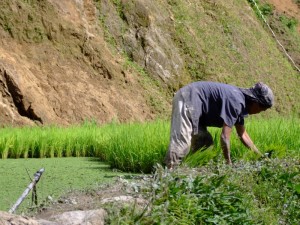
I moved towards some distant workers and tried to figure out how to get up. It was then I spotted a lady tending to her rice paddy. Alone she pulled at clumps of rice stalks, bundled them up, and waded over to the side of the paddy. She’s then repeated the process until she had a sack full. It was then time for her to struggle up the steep embankment. And so the process continued … and repeated all day.
It took us 3 hours to walk back to the main town, along the way stopping off at roadside villages. Marveling at the hidden cables that helped to transport rice sacks up from the bottom of the valley.
If our next destination was the best of the best in Batad, I couldn’t wait. Then that old feeling crept up. Solitude, rural peace. Wanting to know about how it all worked. Banaue had it. But something was lacking. It was all it had. This was not a show piece of UNESCO world heritage, this was everyday life.
